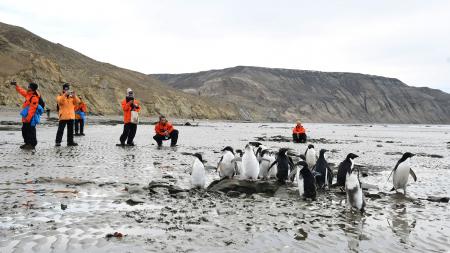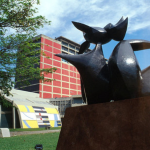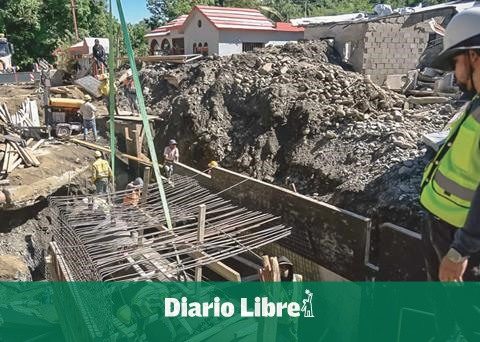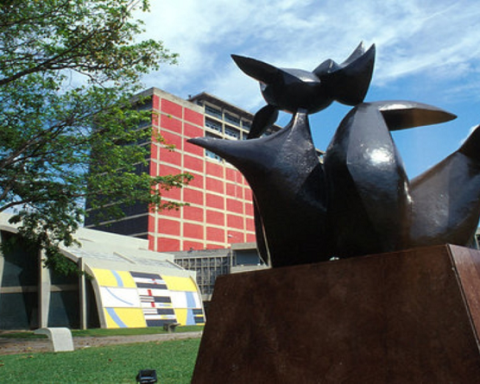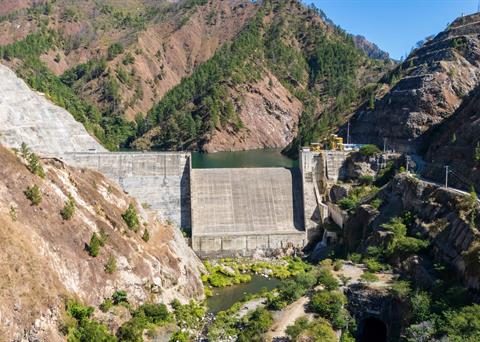“To defend what belongs to us, we must first know it,” reads one of the maxims that usually guides the work of the women and men who are stationed at the Marambio base. And a clear, temperate day with little wind is ideal for walking around this Antarctic island that is part of Argentine territory.
This Thursday, Marambio woke up with a fog that allowed visibility of just 30 meters, a weather condition that prevented planes from landing on the base runway.
A Hercules C-130 of the Argentine Air Force In the morning, it made four unsuccessful attempts to touch the airport in this area of Antarctica.
In this way, the delegation made up of the workers of Télam he had to remain at the base one day longer than expected and thus a well-known motto that guides those who venture to these lands became clear: “In Antarctica you know when you arrive, but never when you return”.
The climatic conditions meant that the exits outside the barracks of the base were reduced and scarce.

The permanence of the visitors affected the normal performance of the military and civilian personnel stationed in Marambio and the confinement of those who are not used to the rigors of this Antarctic life became more than palpable for the entire population.
With the confirmation that the weather conditions would improve the next day, the base authorities decided to organize a walk around the island so that the guests could get to know the native fauna and the relief of the island that is home to this base.
After dinner, the number of attendees was confirmed and the appropriate clothing for traveling through these territories at this time of year was distributed.
Later, from the large windows of one of the living rooms of the base, a awesome sunsetfull of flashes that painted a reddish color the whiteness of the icebergs that run through this part of the Weddell Sea.
A spectacle worthy of being appreciated once and several times that make up part of the many attractions that these lands have, with harsh and hostile climates, but dazzling landscapes.
This Friday’s day gave the group of more than 20 people who undertook this tour the opportunity to appreciate the geography of the lands that surround the base.

In single file, the group walked through stony, muddy terrain with few scattered patches of snow along the island’s plateau where the airstrip runs.
As you advance, the relief becomes arid, flat, like those images that illustrate the landscape of the planet Mars.
Pablo, a biologist from the National University of La Plata who during the current winter campaign that takes place in Marambio studies the penguin colonies on the island, is in charge of guiding this excursion to his usual place of work.
He explains that “the softness of the terrain and the constant gravel that you step on when walking is due to the ancient conditions that existed in this part of Antarctica, which millions of years ago were the bed of a sea that receded.”
“Marambio, like many regions of Antarctica, is an area of constant paleontological research. Recently, remains of a mosasaurus, a species that inhabited the oceans, were found. Findings of prehistoric mammals such as mastodons are also common,” he explains. Paul during the tour.
After passing the track and reaching the end of a plateau, located 200 meters above sea level, the group descended towards a bay.

South American sea lions and seals inhabited that area of the island’s coast, while skuas, gulls and cormorants they flew through the skies.
“You must not go near the wolves, they can get scared and try to attack. We have to take pictures of them from afar,” warns Pablo.
However, the walkers continue along the beachwhose tide was out, and they come across a Weddell seal, is a tame animal that attends to the human presence as if it were used to seeing it, something that is difficult to believe.
Beyond are the penguins, whom Pablo describes as “dwarves” who approach people with curiosity and in groups. And in the same way they walk away when something disturbs them.

The bright midday sun warms the day. It is the ideal time to rest for a while on the beach, next to some blocks of ice scattered on the sand and in a rock formation located at the mouth of a stream that reaches the Weddell Sea.
It’s time to go back. You have to go up the same path that was taken to go down to the beach and it is a difficult task.
While going up a steep slope you can see the other part of the coast and in the background an extinct volcano and a large snow-capped mountain emerge.
Upon returning to the base, the walkers feel that the images they appreciated will accompany them for the rest of their lives. And that it is worth knowing that part of Argentine soil, as remote as it is beautiful.

